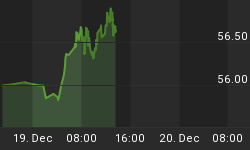As we have pointed out in our May 22nd article, silver producers have been outperforming gold producers over the past 12 months. Seven most liquid mid-size silver companies, represented by the RSG Silver Benchmark (market cap weighted), are up over 30%, while their golden counterparts are about flat over the same time period.
Admittedly, production costs have been rising and profit margins have been falling for both gold and silver producers. We took a closer look by analyzing 15 silver producing mines owned and operated by the silver mid-tier producers. From the first quarter of 2006 to the first quarter of 2007, total cash costs per ounce of silver rose for ten of the mines and fell for five. On average, production costs were up about 10% year-over-year.
Having similar negative cost trends, why did the silver producers perform better than the gold producers? The reason lies in the type of reserves/resources owned by the companies and consequently the makeup of their production. The charts below show resource distribution by dollar weight for the companies contained in the RSG Silver Benchmark:

Silver Wheaton (SLW), the largest in the group, is the only major pure silver play in the stock market. Coeur d'Alene Mines (CDE), another heavyweight in the Benchmark, owns mostly silver and gold resources. By excluding both SLW and CDE from the resource distribution above, it becomes clear that for the other companies in the RSG Silver Benchmark, silver comprises less than half of the total resource base.
The best performers over the past 12 months were indeed not precious metal stocks, but base metal producers. (Freeport-McMoRan - FCX up 65%, Rio Tinto RTP up 55%, Southern Copper PCU up 145%, etc.) It appears the main reason why silver producers have been doing better than gold producers is that investors were looking to diversify into economically sensitive metals.
This is why Hecla Mining (HL) and Pan American (PAAS) who have the largest exposure to base metals, are the strongest in the group. Both stocks are up over 50% over the last 12 months.

Coeur d'Alene (CDE) and First Majestic (FR.V), who have little or no base metal exposure, were instead some of the worst performers.
What does this mean for the future? When the global economy slows down, the not-so-pure silver plays will suffer first until silver takes off. For the time being, we cannot stress enough the importance of investors knowing what they actually own through their metal mining stocks, precious metals, base metals or a combination thereof.
The entire group of the RSG silver stocks consists of over 30 companies, all containing established underground resources. No matter what the economic cycle holds, there are always great growth and value stories to be found.
This is a fragment from the Resource Stock Guide Newsletter originally posted on June 28, 2007.















